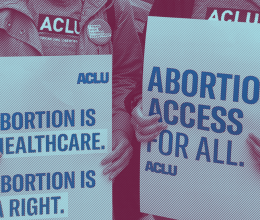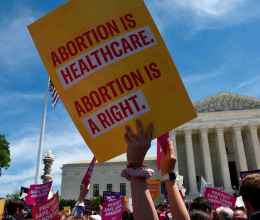
No one should have to fear being unable to afford healthcare, including birth control.
But due to a 7-2 decision by the Supreme Court last week, countless people are at risk of losing insurance coverage for their birth control.
To fully understand what happened, we first need to go back to the Affordable Care Act (ACA), which became law in 2010. When Congress passed the ACA, it required employers to provide women with “preventive care and screenings” without “any cost sharing requirements.” That requirement was in turn further defined by guidelines approved by various federal agencies including the Department of Health and Human Services, the Department of Labor, and the Treasury Department.
Within these approved guidelines, health insurance plans were required to cover all FDA-approved contraceptive methods. When taking the whole picture into account, it’s clear that Congress’ intent was to ensure that all people who want contraception can access it cost-free.
However, some people have been fighting the contraceptive mandate since its inception. First, an exemption to the mandate was created for religious orders, particularly churches. Then a different process, called an accommodation, was created for non-profit organizations with religious objections to covering contraception. Under this process, organizations certify their objections with their health insurance companies, who then step in to provide the coverage directly to the employee. In 2014, the Supreme Court decided that for-profit corporations should also be able to utilize the accommodation process if they held a religious objection.
The Trump administration took things a step further, which brings us to the most recent SCOTUS case. The administration passed rules that would allow any employer — including universities providing health insurance coverage to students — to claim an exemption from the contraceptive mandate based on not only religious objections, but moral objections as well. If they claimed an exemption, these objectors could bypass the accommodation process altogether, meaning that the insurer would not have to step in and employees might not be able to access cost-free birth control.
Despite the fact that the new rules would dramatically weaken the contraceptive mandate and go against Congress’ clear intent in creating the law’s framework, the Supreme Court held that the Trump-Pence administration had the authority to issue these new rules.
The fight will continue: the Pennsylvania Attorney General’s office has announced its intention to continue fighting the case, and legal claims remain outstanding in a federal district court. But this ruling comes at a time when Texas is already experiencing a healthcare crisis. Tragically, if the new rules are implemented, many thousands of people nationwide could be at risk of losing access to no-cost contraceptive services even if they have healthcare coverage through their employer or university.
Coverage of all methods of birth control without out-of-pocket costs enables people to make essential, proactive health-related or family-planning decisions. The ability to access birth control is critical not just to gender equality but to economic security; being able to decide whether and when to have children helps people to control their own paths in life.
Unfortunately, this case is just one example of the extreme hurdles our society has put in front of achieving some semblance of gender equality, despite wins in other recent SCOTUS decisions on cases involving abortion rights and challenging the broader definition of sex discrimination.
But we don’t need to wait for the courts to decide our futures for us. Sign up today to receive updates on our fight to protect reproductive freedoms for all Texans, especially during the next state legislative session.






